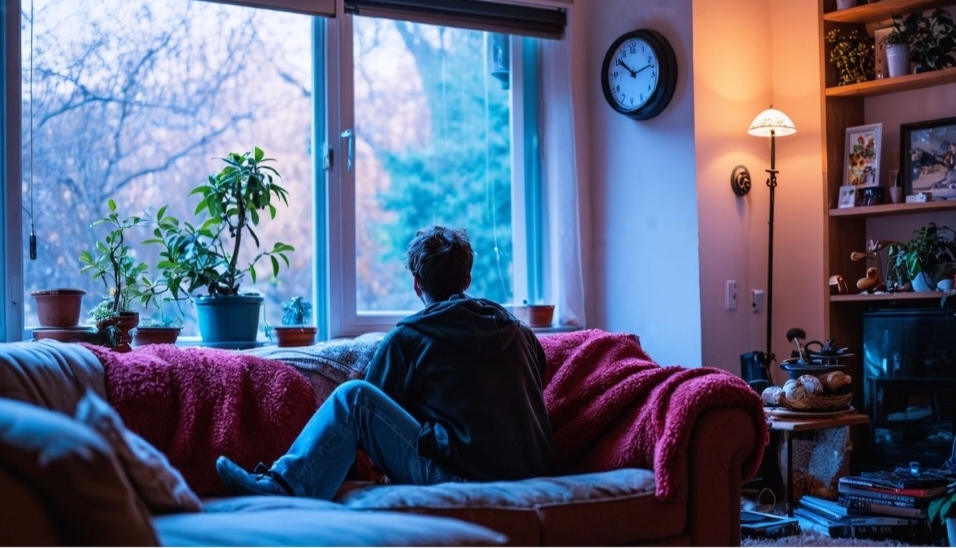Ever wondered how long it takes for magic mushrooms, or shrooms, to kick in? You’re not alone. Many first-time users and even seasoned enthusiasts often find themselves questioning the onset time of these mind-altering substances.
Knowing when you’ll start feeling the effects can help you prepare better for your psychedelic experience.
Did you know that the effects of shrooms usually begin within 20 minutes to 2 hours after ingestion? This wide range can depend on several factors including dosage, method of consumption, and individual metabolism.
In this blog post, we’ll break down everything you need to know about the timing and duration of shroom effects. Ready to uncover how long it takes for shrooms to kick in? Keep reading!
Understanding Shrooms
Magic mushrooms are fungi that contain psychoactive compounds. People use them for their hallucinogenic effects.
What are magic mushrooms?
Magic mushrooms, also known as psilocybin mushrooms, are fungi that contain psychoactive compounds. The main chemicals in these mushrooms are psilocybin and psilocin. People use them for their mind-altering effects.
These magic fungi have various names on the street like shrooms, sacred mushrooms, and psychedelic mushrooms. Their effects can include visual and mental changes that users seek for spiritual or recreational purposes.
Types of magic mushrooms
Magic mushrooms come in various types with different effects and potency. Each type contains a key substance called psilocybin that causes hallucinations.
- Psilocybe cubensis
- Commonly found in tropical climates.
- Popular among users for its strong effects.
- Often grown commercially.
- Psilocybe semilanceata
- Also known as “Liberty Caps.”
- Found in pastures and grassy areas, especially in Europe.
- Known for a potent psychedelic experience.
- Psilocybe cyanescens
- Referred to as “Wavy Caps.”
- Grows on wood chips and mulch.
- Remarkably high psilocybin content.
- Psilocybe azurescens
- One of the most powerful species.
- Common along the Pacific Northwest coast.
- Results in intense visual hallucinations.
- Psilocybe baeocystis
- Sometimes called “Bottle Caps” or “Knobby Tops.”
- Prefers cooler, humid environments.
- Causes unique physical sensations and vivid visuals.
- Psilocybe tampanensis
- Known for producing “magic truffles.”
- Originally discovered in Florida but now cultivated worldwide.
- Produces milder yet deeply introspective trips.
- Psilocybe mexicana
- Used traditionally by indigenous Mexican people for spiritual ceremonies.
- Has a rich history of use dating back centuries.
– Produces euphoric and mystical experiences.
- Psilocybe weilii
– Found mostly in Georgia, USA.
– Recognized for creating an intense, long-lasting trip.
Uses and street names
Shrooms, short for magic mushrooms, have several uses and street names. They serve various purposes, often recreational, spiritual, or therapeutic.
- Recreational Use: People take shrooms to experience euphoria and visual hallucinations. They often use them at parties or with friends to enhance their mood and senses.
- Spiritual Use: Many cultures use shrooms in ceremonies to connect with spirits or gain deep insights. They believe these mushrooms help reach higher levels of consciousness.
- Therapeutic Use: Some therapists explore psilocybin for treating mental health issues like depression and PTSD. Research is ongoing to see how effective it can be in a controlled setting.
- Street Names: Shrooms have many street names like magic mushrooms, mushies, and trippy fungi. These names make them sound fun but do not highlight their powerful effects.
These varied usages show how versatile shrooms can be while also emphasizing the need for caution and understanding.
How Do Shrooms Work in the Brain and Body?
Shrooms affect the brain by altering neurotransmitter levels. They cause changes in mood, perception, and thought processes.
Psychoactive compounds in shrooms
Shrooms, or magic mushrooms, contain the psychoactive compounds psilocybin and psilocin. Psilocybin converts to psilocin in the body. This compound interacts with serotonin receptors in the brain, especially the 5-HT2A receptor.
The effect on these receptors leads to changes in perception, mood, and thought.
These hallucinogenic compounds produce intense experiences. Users often report visual distortions and altered sense of time. Understanding this interaction helps explain why shrooms have such powerful effects on the mind.
Effects on the body
Psilocybin in magic mushrooms interacts with serotonin receptors in the brain. This changes how you feel, think, and see. Many users experience visual distortions, such as seeing patterns or vibrant colors.
Some might feel intense emotions or altered perception of time.
Physical effects can include a faster heart rate and higher blood pressure. Shrooms may also cause nausea or dizziness during the onset phase, which starts 20 minutes to 2 hours after ingestion.
They last for about 4 to 6 hours but peak within the first 1 to 2 hours.
Designation of shrooms
After psilocybin enters the body, it quickly affects the brain’s serotonin receptors. This leads to hallucinations and altered thinking patterns. Shrooms contain psilocybin, a psychoactive compound that provides these effects.
People often refer to shrooms by different names on the street. Common ones include “magic mushrooms,” “mind-altering mushrooms,” or simply “shrooms.” They are not physically addictive, but there can be a potential for psychological dependence.
When Do Shrooms Kick In?
Shrooms can start to affect you within 20 to 40 minutes after taking them. Read more to understand the entire experience.
Onset and duration
Magic mushrooms, or shrooms, take some time to kick in. The effects can last several hours, and here’s how it works:
- Onset Time
- Effects usually start between 20 minutes to 2 hours after ingestion.
- Individual metabolism can speed up or slow down this onset.
- Early Signs of Shroom Effects
- Users may notice changes in mood or perception.
- Lightheadedness and slight nausea are common early signs.
- Peak Effects
- Peak effects occur within 1 to 2 hours after the initial onset.
- Visual and auditory hallucinations often peak during this period.
- Total Duration of Effects
- The total psychedelic experience lasts approximately 4 to 6 hours.
- Most users report a gradual return to normalcy after the peak period.
- Factors Influencing Duration
- Body weight, age, and overall health can impact how long effects last.
- Type and amount of shrooms ingested also play a crucial role.
Understanding these points helps in preparing for a shroom experience.
Early signs of shroom effects
Distorted lights and noises are often the first signs that shrooms are beginning to take effect. Users may see patterns or colors that seem to move or shift. Sounds might become richer or strange, creating a surreal sensory experience.
A nervous stomach can occur as another early sign. This could be mild nausea or slight stomach discomfort. Some people report feeling lightness in their bodies, almost like a floating sensation mixed with slight euphoria.
Feelings of happiness usually follow these initial effects. Sensory alterations become more noticeable, such as increased sensitivity to touch and changes in perception of time or space.
Peak effects typically develop soon after these early signs emerge.
Peak and duration of effects
The initial signs of shroom effects transition to more intense experiences. The peak of shroom effects usually occurs within 1.5 to 2.5 hours.
- Peak Intensity: Users often feel the strongest effects during this period. The perception of reality may change dramatically.
- Visual Distortions: Bright colors and moving patterns are common.
- Emotional Highs: Shrooms can cause mood swings, from euphoria to anxiety.
- Auditory Hallucinations: Sounds might seem amplified or altered.
- Heightened Senses: Smells and tastes become more intense.
- Cognitive Changes: Deep thoughts or new perspectives may arise.
Effects start to lessen after the peak. The comedown lasts another 2 to 3 hours.
- Gradual Reduction: Sensations and perceptions slowly return to normal.
- Physical Fatigue: Users might feel tired as their body processes the substance.
- Mental Clarity: Clear thinking gradually returns, often with lingering insights from the trip.
Shrooms offer a powerful, short-term experience filled with unique sensory changes and cognitive shifts.
How Long Do Shrooms Stay in Your System?
Shrooms can stay in your system for up to 24 hours. The time it takes to clear depends on various factors like metabolism and dosage.
Factors influencing duration
The time it takes for shrooms to kick in can vary. Several factors determine this duration.
- Dosage: A higher dose of shrooms generally leads to a quicker onset of effects.
- Method of Consumption: Eating dried mushrooms or brewing them into tea affects absorption time differently.
- Individual Metabolism: Faster metabolism rates can process the compounds in shrooms more quickly.
- Stomach Content: Having food in your stomach can slow down the absorption of active compounds.
- Drug Dosage: The amount consumed impacts how fast and intense the effects will be.
- Substance Absorption: How well your body absorbs these compounds also plays a role.
- Mushroom Consumption Method: Different consumption methods, like capsules or raw, alter the duration significantly.
These factors help explain why shroom experiences differ from person to person.
Metabolism and elimination
Shrooms begin to break down in your body quickly. Your metabolism processes the psychoactive compounds, mainly psilocybin. This compound converts into psilocin, which causes the psychoactive effects.
Drug elimination happens through urine, blood, saliva, and hair tests. Psilocin is detectable in urine for up to 24 hours and in blood for up to 12 hours. Saliva can show traces of it also for up to 24 hours.
Hair samples may reveal shroom use even after 90 days. Rapid metabolic rate influences how quickly these substances clear from your system.
Detection in drug tests
Detecting shrooms in your system depends on the type of drug test used. Here is a quick summary of the detection windows for various tests:
| Type of Test | Detection Window |
| Urine Test | Up to 24 hours |
| Blood Test | Up to 12 hours |
| Saliva Test | Up to 24 hours |
| Hair Test | Up to 90 days |
Urine tests can detect shrooms for up to 24 hours. Blood tests show traces for up to 12 hours. Saliva tests also detect them for up to 24 hours. Hair tests have the longest detection period, up to 90 days.
Risks and Safe Use of Shrooms
Shrooms can cause intense and unexpected reactions. Always start with a low dose to gauge its effects on your body.
Side effects and potential risks
Shrooms can cause various side effects and potential risks. Users should be aware of these before consuming them.
- Nausea and Vomiting: Many users experience nausea and vomiting soon after taking shrooms. This happens as the body reacts to foreign substances.
- Distorted Perception: Shrooms can make sights, sounds, and time feel strange or distorted. This altered consciousness can make it hard to function normally.
- Emotional Swings: Intense emotions are common with shroom use. Users might feel happy one moment and sad or scared the next.
- Confusion: Shrooms often cause confusion, making it tough to think straight or understand what’s happening around you.
- Anxiety or Panic: Some users may feel anxious or panicky during a trip. This can be very distressing and overwhelming.
- Hallucinations: Seeing things that aren’t there is a key effect of shrooms. These psychedelic effects vary from mild visuals to intense visions.
- Insomnia: Trouble sleeping is another side effect of shrooms, often lasting until the effects wear off completely.
- Paranoia: Users sometimes feel paranoid or believe someone is out to get them while under the influence of shrooms.
- Psychosis: In rare cases, shrooms may trigger psychosis, leading to a break from reality that needs medical attention.
- Dizziness and Loss of Coordination: Shroom use can lead to dizziness and loss of coordination, increasing the risk of accidents.
- Cognitive Impairment: Thinking clearly becomes difficult under the influence of shrooms, affecting your ability to make decisions.
- Long-Term Mental Health Issues: Frequent use might lead to long-term mental health problems like anxiety disorders or depression.
Addiction and overdose
Magic mushrooms, or shrooms, are not physically addictive. Users won’t experience withdrawal symptoms like those seen with other drugs. There is potential for psychological dependence, though.
Some people might use them to escape their problems or emotions.
Using shrooms can cause an elevated heart rate and lead to emotional and behavioral issues. Overdosing on shrooms doesn’t typically cause fatal outcomes but may result in a very intense and scary experience known as a “bad trip.” Mental health effects should be carefully considered before trying these psychedelic drugs.
Tips for safe use of shrooms…
Tips for safe use of shrooms
Using shrooms can be a fun experience, but safety is important. Follow these tips for safe use:
- Start with a low dose: Begin with a small amount to see how your body reacts.
- Wait before taking more: Wait 2 hours after the first dose if you feel it was not enough.
- Use in a safe environment: Stay in a familiar and comfortable place to avoid anxiety.
- Have a trusted friend nearby: A sober friend can help if anything goes wrong.
- Stay hydrated: Drink water to keep your body hydrated during the experience.
- Avoid mixing substances: Do not mix shrooms with alcohol or other drugs.
- Take breaks between uses: Wait at least one day before using shrooms again.
- Be aware of mental health conditions: Avoid using shrooms if you have anxiety or other mental health issues.
- Know the law: Check local laws as magic mushrooms are illegal in many places.
Following these steps ensures a safer experience with shrooms.
Conclusion
Shrooms create hallucinations and altered states of mind. Effects usually start within 20 minutes to 2 hours after taking them, peaking around 1 to 2 hours.
The total experience lasts about 4 to 6 hours but can vary based on dosage and other factors. It’s important to use shrooms in a safe setting due to their strong psychological effects. When purchasing microdoses, be wary of the vendors. Reputed vendors like Schedule35 will help ease the purchase process.
FAQs
1. How long does it take for shrooms to kick in?
Shrooms usually start working within 20 to 40 minutes after taking them.
2. What factors affect how quickly shrooms work?
Factors like your weight, metabolism, and whether you ate recently can change how fast shrooms start working.
3. Do different types of shrooms work faster or slower?
Yes, some types of shrooms may act quicker than others based on their potency and form (dried or fresh).
4. Can the method of consumption change the onset time for shrooms?
Yes, eating dried mushrooms might take longer to kick in compared to drinking a mushroom tea or using extracts.



